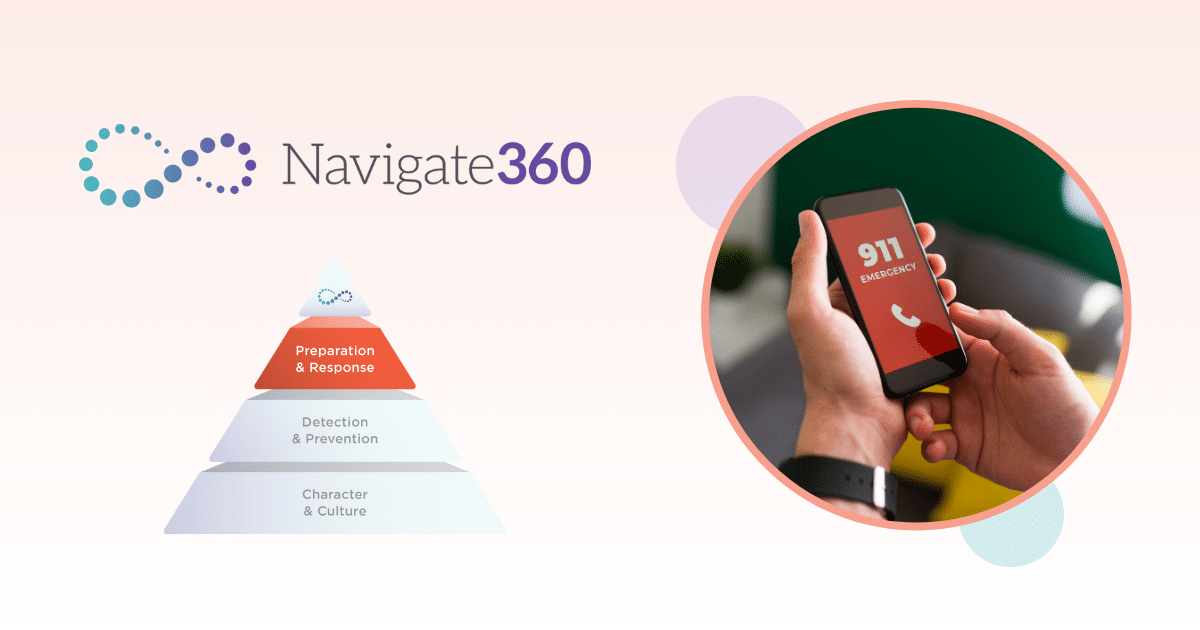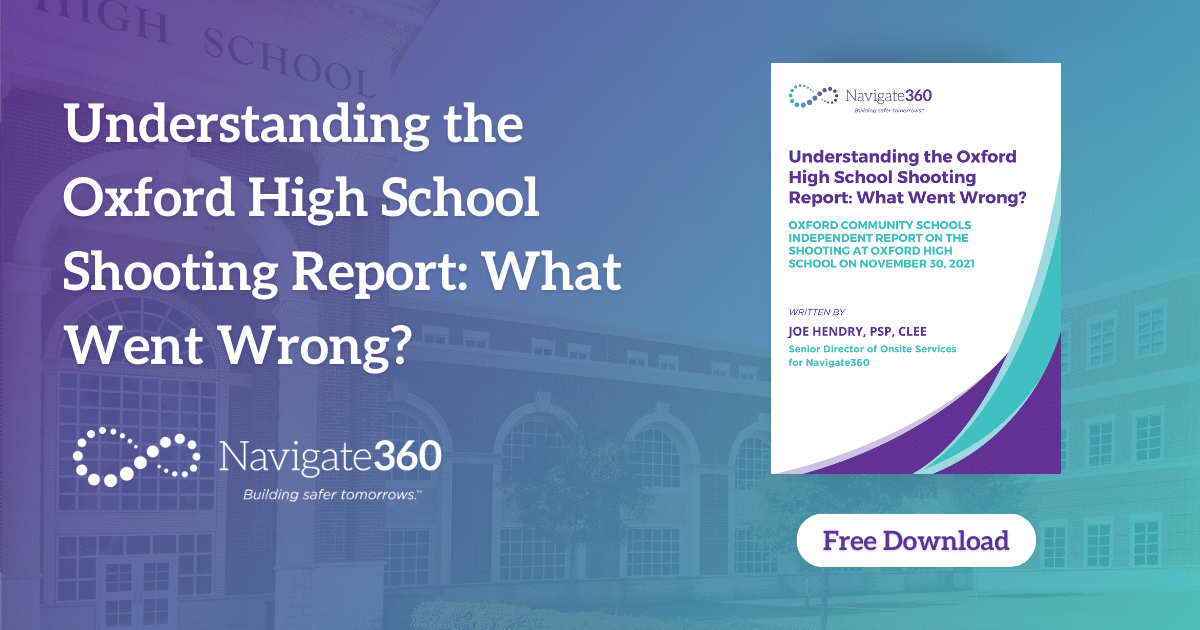It’s Crucial to Prepare Your Schools’ ‘True’ First Responders with an Active Shooter Drill
Violence can happen anywhere and at any time. This year alone, there have been more mass shootings than there are days in the year with 564 mass shootings so far in 2023 (as of October 25, 2023). These numbers indicate that it’s not enough to merely hope something bad will never happen on our campuses. While prevention of violence is our goal, schools can’t always predict emergencies or prevent them from happening. However, school leaders can guarantee that their staff and students are prepared to respond to an emergency.
When it comes to emergency planning, it’s crucial to employ effective, options-based response training, specifically active shooter response training. This training, which should include an active shooter drill, is essential to enhancing individuals’ ability to make informed decisions, remain calm under pressure, and work together to minimize harm during a crisis.
Who Are the ‘True’ First Responders in an Active Shooter Event?
The fact is that 69% of active shooter incidents last only five minutes or less, often ending before law enforcement arrives. In the time before law enforcement arrives, the ‘true’ first responders are teachers and staff. These individuals shepherd students through the necessary response protocols before law enforcement ever arrives during a tragic emergency.
Well-established emergency preparedness plans, including active shooter drills, allow schools to minimize the negative impacts of violent critical incidents, save lives, and create an environment where students can thrive with confidence.
Response Matters: Preparing Staff, Students & Their Families for the Unthinkable
Preparation is the initial step in emergency response planning. All staff, including teachers, substitutes, bus drivers, cafeteria workers, office personnel, and all adults in the building, should receive training in response strategies for violent critical incidents. This training ensures that every individual within the facility understands their level of responsibility in an emergency.
Students should also receive developmentally-appropriate and trauma-informed training on how to respond to emergencies, including active shooter situations. Even young students should be equipped to act in case an emergency occurs when no adult is available to assist. Preparedness exercises, including safety drills and active shooter drills, play a vital role in preparing students for such instances.
Furthermore, it’s crucial to educate families. Ideally, these preparedness efforts not only mitigate risk but also alleviate anxiety. Demonstrating to parents that you have well-defined safety plans and protocols in place for responding to such situations will foster trust in your institution during emergencies. Effective communication with families regarding your preparation efforts is of utmost importance.
The Fundamentals of an Active Shooter Drill: Understanding the Importance & Execution
Many states mandate that schools conduct various drills each year, and the alarming frequency of shootings on and off school campuses necessitates preparedness. Without active shooter drill training, schools risk being ill-prepared to respond effectively to an active shooter threat.
As the ancient Greek poet Archilochus, circa 650 BC, wisely noted, “We don’t rise to the level of our expectations; we fall to the level of our training.”
The primary objective of active shooter drill training is to empower individuals to respond to an active shooter emergency with confidence, ultimately increasing their chances of survival. By preparing both staff and students proactively for a violent critical incident, we bolster their resilience. The repetitive training of these drills enable individuals to react under immense stress, fostering familiarity with protocols even in high-pressure situations.
Much like how schools conduct fire drills or tornado drills to save lives during natural disasters, likewise, active shooter drills serve a similar purpose. They equip staff and students to actively participate in their own survival should they ever experience an active shooter event. Moreover, this comprehensive preparedness is key to ensuring the safety and security of everyone within the school community.
Preparing Students for An Active Shooter Drill:
- Announce the Drill: Start by announcing the active shooter drill well in advance and ensure that parents/caretakers are informed to maintain transparency and minimize anxiety.
- Welcome Questions and Dialogue: Encourage an open dialogue, welcoming questions from students. The aim is not to induce fear but to empower them with knowledge.
- Emphasize the “Why”: Explain the purpose behind the drill. Emphasize how it’s about practicing life-saving procedures. After the drill, debrief with students to clarify the reasons behind each action.
- Incorporate Trauma-Informed Practices: Ensure that the emotional well-being of students is a priority throughout the drill preparation.
Working with Students After the Drill:
- Debrief and Assess: After the drill, conduct a debriefing session to identify successes and areas for improvement.
- Open Discussion and Emotional Support: Encourage students to share their feelings and concerns in a safe and open discussion.
- Unwind and De-stress: Consider offering non-academic activities or free time after the drill to help students relax.
- Recognize Atypical Behaviors: Be prepared to identify and address any unusual behaviors that students may exhibit post-drill.
These steps are crucial in ensuring that students and families are well-prepared for an active shooter drill. It’s imperative that they receive the necessary support throughout the process.
ALICE Training® & Navigate360’s Emergency Management Suite Work Better Together for Your School’s Safety Planning
You can’t know if or when an emergency will occur, but you can benefit from the peace of mind found in knowing that you have taken steps to prepare.
ALICE Training® empowers individuals to prepare for and respond to high-stress emergencies and acts of violence with courage and resilience. A perfect complement to ALICE Training ®, Navigate360’s Emergency Management Suite is a comprehensive solution that equips schools to handle a wide range of crises effectively. Whether it be natural disasters, medical emergencies, an active shooter incident, or something else, this technology streamlines response efforts, facilitates communication, and minimizes disruptions. Create and manage emergency operation plans, coordinate drills and drill logs, save and manage maps and floor plans, and more.
Don’t just rely on hope, call us today at 330-661-0106 or click here to speak with a school safety and incident management specialist and begin preparing your campus and school community now with simplified preparedness.
You can also download our free eBook, Response Begins with Preparation: Equip Your Schools for the Unthinkable, to learn more about emergency planning for a variety of scenarios.




